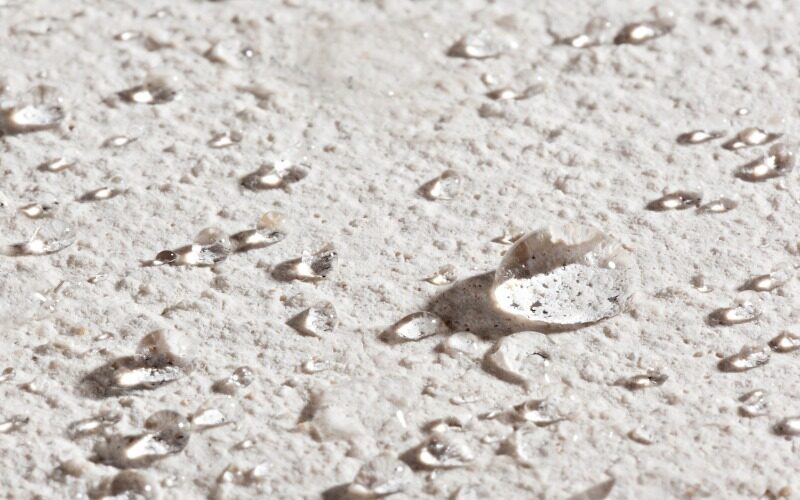
Moisture can do irreparable damage to gypsum building materials. To prevent this and to protect the set gypsum mortar against moisture, powder-form water-repellent agents are admixed to the dry-mix mortar. This requires manufacturers of standard powder-form water repellents to employ carrier or encapsulation materials as a way of converting the liquid active ingredients into a powder. These additives delay the onset of the hydrophobic effect of the liquid water repellent until the mixture of gypsum mortar and water has set. The disadvantage of such additives, however, is that they are composed almost entirely of carrier material. The actual active ingredient constitutes just a few weight percent of the formulation – which is not very efficient in terms of either weight or cost.
The solution here is to use WS80 Powder. This new additive for dry-mix mortars does not require any additional additives, consists entirely of a novel, active powder ingredient and so is extraordinarily efficient. Just 0.2 wt-% of it is enough to make gypsum building material water-repellent. Gypsum containing the new additive absorbs up to 90 % less water when set and can be employed in bathrooms, kitchens, stairwells and garages. Gypsum-based wall plasters, joint fillers and adhesives that have been formulated with the additive are thus suitable for use throughout house interiors.
WS80 Powder consists of a methyl siliconate which is produced as a colorless, free-flowing powder by a special process. The active ingredient is inherently soluble in water, a property which confers excellent mixing properties when the mortar is being prepared. Nonetheless, the gypsum mortar is water-repellent as soon as it sets.
The repellant can be used with all types of gypsum dry mix mortars, irrespective of the pH. It eliminates the pre-reaction times which are often needed by conventional powder-form water-repellent agents. The additive even supports the formulation of Type H1 gypsum jointing compounds that meet the highest requirements for reduced water absorption. According to Standard EN 13963:2014, which was revised last year, Type H1 joint fillers must absorb no more than 5 wt-% water after setting.
